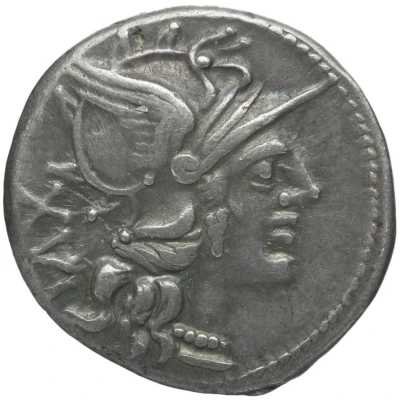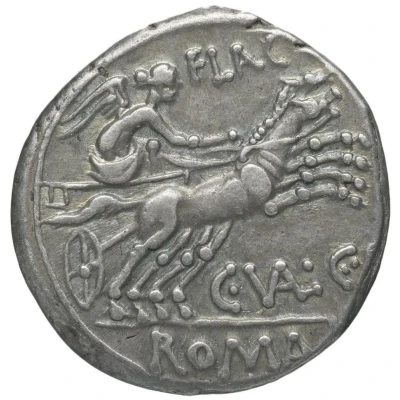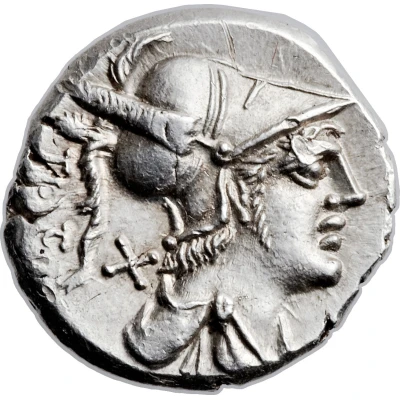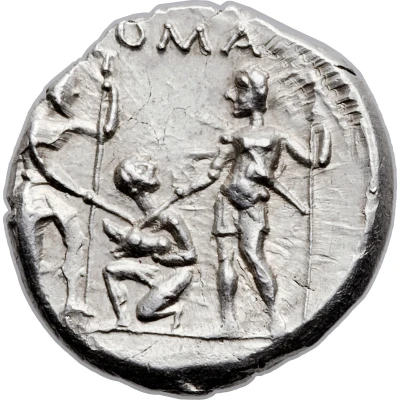


© Bibliothèque nationale de France / Gallica
Denarius C. Valerius Flaccus; FLAC C•V͡A͡L•C•F ROMA 140 BC
140 BC year| Silver | 3.88 g | 19 mm |
| Issuer | Rome › Roman Republic (509 BC - 27 BC) |
|---|---|
| Period | Republic (509 BC - 27 BC) |
| Type | Standard circulation coin |
| Year | 140 BC |
| Value | Denarius (1) |
| Currency | Denarius of 16 Asses (141 – 27 BC) |
| Composition | Silver |
| Weight | 3.88 g |
| Diameter | 19 mm |
| Shape | Round (irregular) |
| Technique | Hammered |
| Orientation | Variable alignment ↺ |
| Demonetized | Yes |
| Updated | 2024-10-06 |
| Numista | N#392534 |
|---|---|
| Rarity index | 100% |
Reverse
Victory in biga, right, holding reins in left hand and whip in right hand. Line border.
Script: Latin
Lettering: FLAC C•V͡A͡L•C•F ROMA
Interesting fact
The Denarius coin was used as a standard currency in ancient Rome and was equivalent to 10 bronze asses or 4 sestertii. It was first introduced in 211 BC and remained in circulation until the fall of the Roman Republic in 27 BC. The coin's design often featured images of Roman gods and goddesses, as well as various other symbols and motifs. In addition to its monetary value, the Denarius also held cultural and historical significance, as it was often used as a means of propaganda and political promotion.



